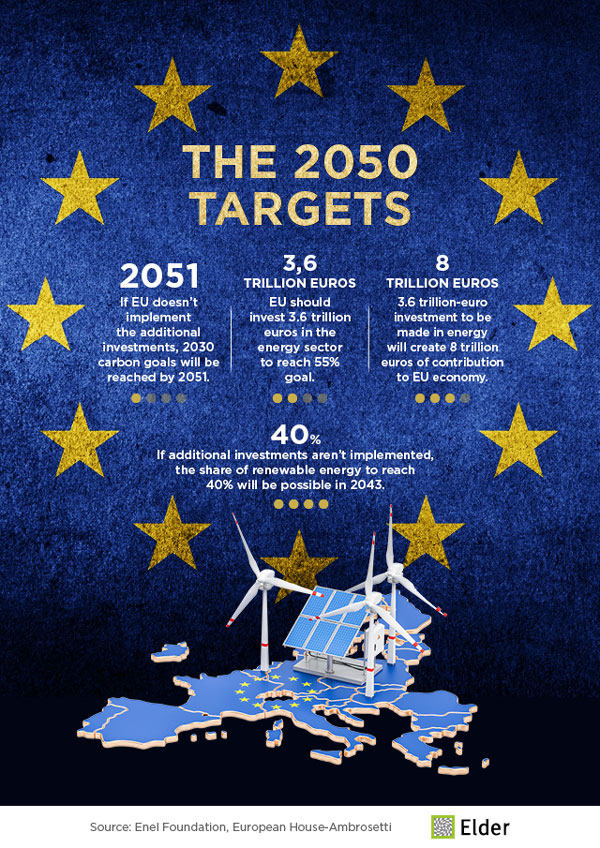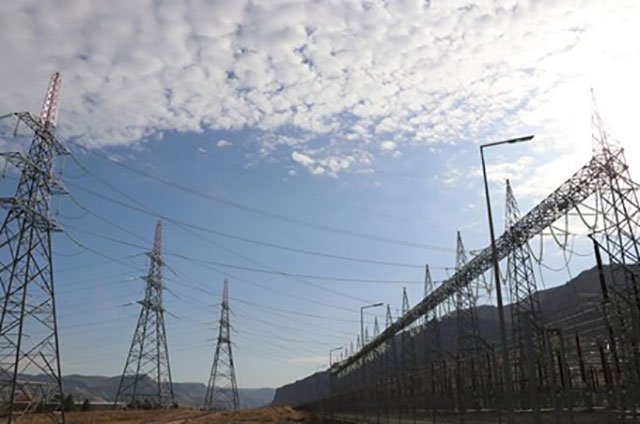
Turkey set new all-time high records on Sept. 3 for daily electricity production and hourly electricity consumption, the nation’s energy and natural resources minister announced.
“Turkey’s energy production continues to rise, breaking records. Despite the (COVID-19) outbreak, we have a new record on daily energy production,” Fatih Dönmez reported over his Twitter account.
According to the data shared by Dönmez, an all-time high daily generation was recorded on Sept. 3 with 1.07 billion kilowatt-hours (KWh), breaking the previous record of 1.06 billion KWh set on Aug. 2, 2018.
The highest hourly electricity consumption of all time was also recorded on Sept. 3 with 49.6 million KWh.
The country’s electricity consumption also hit a new record high on July 21 with 934,482 megawatt-hours (MWh), according to Turkish Electricity Transmission Corporation (TEIAŞ).
It exceeded the previous peak on July 7, when the daily electricity consumption reached 932,351 MWh.
The primary goal of the country's energy sector is to boost electricity production from domestic and renewable sources.
It produced 62.08% of its electricity from local and renewable sources from January through July this year, according to the data from the Energy and Natural Resources Ministry.
It is approaching its goal of producing almost 66% of its electricity from local and renewable sources annually.
Last year it ranked second in Europe in the production of electrical energy based on renewable resources while the country's electricity production from local and renewable resources stood at 62%.
Source: Daily Sabah

Turkey's electricity consumption increased by 12.19% in August compared to the same month last year, recording 32.12 billion kilowatt-hours, according to data of the Ministry of Energy and Natural Resources.
The highest daily electricity consumption in the country last month was recorded on August 4 with 1.14 billion kilowatt-hours, and the lowest was on August 15 with 901.8 million kilowatt-hours.
Electricity consumption increased by 12.19% to 32.12 billion kilowatt-hours in August compared to the same month last year, and production also grew by 12.85% to 32.37 billion kilowatt-hours.
During this period, hydroelectric power plants accounted for 12.8% of electricity production, natural gas power plants generated 41.7%, and coal power plants contributed13.1%. Wind energy produced 6.38%, and imported coal power plants generated 17.6%, while the remaining share of production was supplied by geothermal, solar, fuel oil and biomass sources.
According to Erdal Tanas Karagol from the Yildirim Beyazit University's Department of Economics, the modest share of hydroelectric generated power in August was because of drought in Turkey as a result of global climate change.
He also explained that the higher temperatures generated greater demand for air conditioning and resulted in power cuts.
'Especially in the second quarter, there was an increase in electricity consumption due to industrial production. If we also consider the sudden increase in demand in certain periods, problems such as blackouts become possible. Of course, preparations should be made. It should not be forgotten that climate change is the main cause. If necessary, renewal and revision should be made in transmission lines and investments should be shaped.'
Turkey's electricity imports increased by 85.9% in August compared to August last year, from 105.96 million kilowatt-hours to 196.98 million kilowatt-hours.
Electricity exports in August also saw a huge increase of 189% to 440 million kilowatt-hours, relative to 152 million kilowatt-hours in August last year.
Source: Anadolu Agency
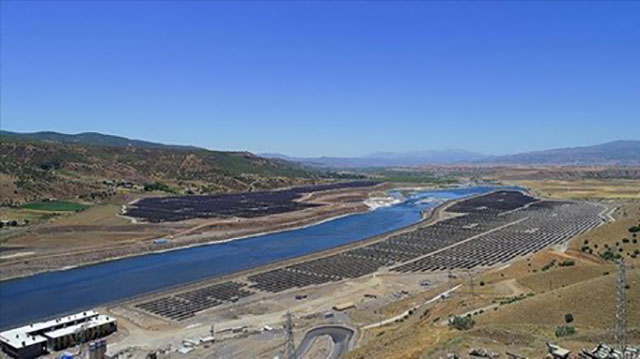
Although Turkey's installed hydropower capacity is continuing its growth, output from hydropower plants has fallen to 20.1% in electricity generation during the January-July period of this year, according to data compiled by Anadolu Agency.
By the end of July, 735 hydropower plants generated electricity in Turkey.
The share of these plants in the country's total electricity generation of 188.7 billion kilowatt-hours was 20.1%, or 37.9 billion kilowatt-hours during the January-July period of this year.
Hydropower plants saw a dramatic drop in output due to drought, which first emerged in the last quarter of 2020.
The share of hydropower plants in electricity generation during the January-July period of 2020 hit 31.6%, generating 53.8 billion kilowatt-hours of electricity out of the total of 170.4 billion kilowatt-hours.
At the end of July this year, Turkey's hydropower capacity reached 31,436 megawatts, accounting for 32% of the country's total installed power capacity of 98,264 megawatts.
Hydropower constituted 60% of Turkey's total installed renewable capacity, which stood at 52,000 megawatts.
The country’s first hydropower plant, the Tarsus plant in the Mersin province, began operations in 1902 with a capacity of 60 kilowatts. This increased to 18 megawatts in 1950, and up to 412 megawatts in 1960.
Turkey's hydropower capacity accelerated especially after the year 2000 to 13,063 megawatts by the end of 2006 and 23,643 megawatts in 2014, relative to 6,764 megawatts in 1990.
By the end of last year, this further expanded to 30,984 megawatts.
According to the International Hydropower Association (IHA), Turkey added 2,500 megawatts of hydropower capacity in 2020, marking the second highest after China.
International Energy Agency estimates that Turkey's hydropower capacity could increase to 34,000 megawatts by 2023.
The southeastern province of Sanliurfa led in hydropower capacity with 3,128 megawatts.
Elazig in the east followed with 2,445 megawatts, while Diyarbakir and Adana trailed behind with 2,251 and 1,905 megawatts of hydropower capacity, respectively.
The Artvin province in the Black Sea region ranked fifth with 1,815 megawatts followed by Samsun with 1,372 megawatts.
Bingol also made a sizable contribution of 1,316 megawatts, Kahramanmaras, Mardin and Giresun also supplied 1,305, 1,213 and 947 megawatts of installed hydropower capacity, respectively.
The State Electricity Generation Company (EUAS) reported the highest hydropower capacity of 13,993 megawatts and for the private sector, Cengiz Holding led with 1,443 megawatts followed by Enerjisa Uretim with 1,350 megawatts and Limak Enerji with 1,137 megawatts.
Aydem Energy ranks fifth with the highest hydropower capacity of 852 megawatts in Turkey.
According to IHA data, Turkey is currently among the top 10 countries with the highest hydropower capacity.
China, out of 1,330 gigawatts of global hydropower capacity, accounted for 370,000 megawatts, ranking the first worldwide.
Brazil and the US rank second and third with 103,000 and 102,000 megawatts. Canada follows with 82,000 megawatts of installed hydropower capacity.
By the end of 2020, India had 50,500 megawatts and Japan and Russia each had 49,900 megawatts.
Norway's hydropower capacity reached 33,000 megawatts while Turkey's capacity stood at 30,984 megawatts at the end of last year.
France followed with 25,500 megawatts.
Source: Anadolu Agency

Turkey's liquefied natural gas (LNG) import dropped 41.3 percent in the first half of the year compared to the same period of 2020, as LNG prices hit record-high levels on international markets.
According to Energy Market Regulatory Authority (EMRA) data, Turkey imported 30.3 billion cubic meters of natural gas during the January-June period of this year.
Total natural gas imports increased by 35 percent during this period compared to the first half of last year.
LNG accounted for 20 percent of Turkey's total natural gas imports with 6 billion cubic meters in the first six months of this year.
However, during the same period last year, LNG imports amounted to 10.3 billion cubic meters, out of the total of 22.5 billion cubic meters of natural gas import.
In the January-June period last year, LNG held a 45.7 percent share out of the country's total natural gas imports.
Ali Arif Aktürk, a board member of İzmir Gaz, told Anadolu Agency that natural gas and LNG prices on international markets were lower last year due to cheaper oil prices.
He explained that Turkey's Petroleum Pipeline Company (BOTAŞ) imported a significant amount of LNG last year to benefit from low prices but this year LNG prices worldwide hit record levels and this directly reflected on Turkey's LNG imports.
Last year, LNG prices were $4.5-5 per million British Thermal Unit (mmBtu) while prices are around $13-14 per mmBtu this year. Higher oil prices, increasing carbon prices and demand in Europe due to the extremely hot weather conditions and growing consumption with the recovery from the pandemic led to the record increase in prices,' Aktürk said.
Oil prices climbed to as high as $75 a barrel after multiyear low levels.
Turkey, importing LNG both on long-term contracts and spot cargoes, received half of its LNG imports during the first half of this year through long-term contracts with Algeria, importing 3.1 billion cubic meters.
During this period, LNG imports from the U.S. fell by 11.5 percent down to 1.8 billion cubic meters, while Nigeria supplied Turkey’s remaining LNG imports.
Qatar, which was one of the biggest LNG suppliers to Turkey, did not supply any LNG during the first half of the year.
Aktürk surmised that a price level in the region of $7 to $9 would be ideal not to damage the market and enable production to continue.
Source: Hurriyet Daily News
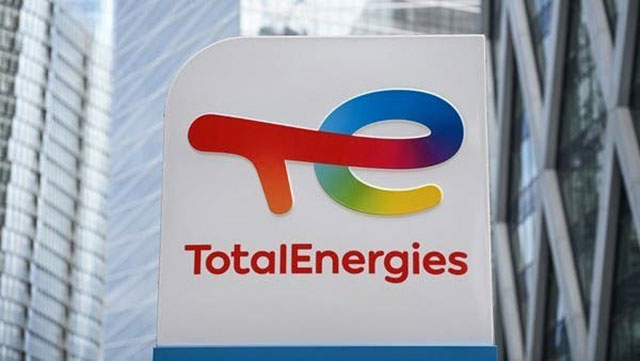
Iraq’s government and TotalEnergies SE agreed on a $27 billion package of investment deals aimed at boosting oil and gas output and reducing power outages in OPEC’s second-biggest producer.
The French energy company will invest $10 billion in the projects over seven years, Iraq Oil Minister Ihsan Abdul Jabbar said at a ceremony in Baghdad. Work on the projects will start in southern Iraq by the end of the year, TotalEnergies Chief Executive Office Patrick Pouyanne said at the event.
Under the agreement, TotalEnergies will invest in the large Ratawi oil field in the southern province of Basra, and bring expertise in seawater injection to the region’s oil wells to maintain their production, Bloomberg reported Friday, citing people with knowledge of the situation.
TotalEnergies will also help Iraq to capture natural gas associated with several oil fields in the region and will build a large solar plant. The agreement marks the biggest investment by a foreign company in Iraq, Abdul Jabbar said.
The accord comes ahead of elections in Iraq next month. The country faces frequent electricity blackouts with infrastructure investment in the oil-rich nation hobbled by years of conflict, terrorism, and insecurity.
While Iraq pumps about 4 million barrels a day of oil, more than any other member of the Organization of Petroleum Exporting Countries other than Saudi Arabia, international companies also have been put off in recent years by tough contractual terms, payment delays and political instability.
Making better use of its own gas could help Iraq reduce its dependence on imports of the fuel from Iran -- on which it relies for power generation. By stopping flaring from its own fields, Iraq could use gas that’s now wasted to generate power. Using seawater to boost pressure in oil wells will help preserve Iraq’s main rivers for other uses as reserves are strained by global warming.
For TotalEnergies, the projects will boost the company’s modest presence in Iraq, and extend its expansion across the Middle East and North Africa after earlier deals in Libya, Qatar, and Abu Dhabi.
Still, the energy major’s quest for low-cost resources isn’t without risks. Its liquefied natural gas plant in war-torn Yemen has been idled since 2015, and the construction of an LNG facility in Mozambique is on hold for at least a year as the government seeks to contain terrorist attacks in the area.
Source: Bloomberg
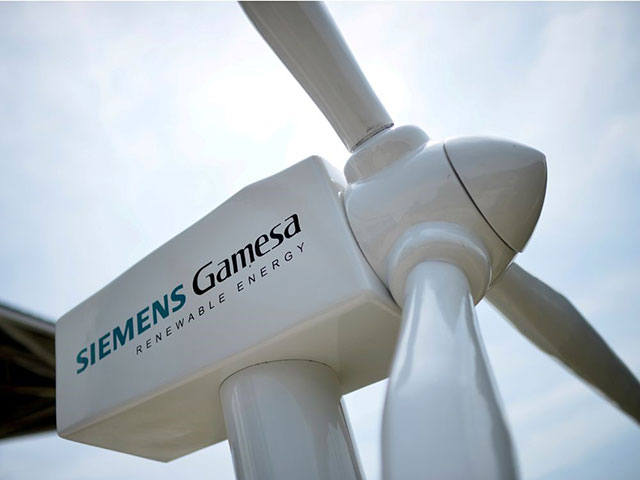
Spanish wind-turbine maker Siemens Gamesa Renewable Energy SA is offering customers a blade that’s fully recyclable in an effort to end the practice of sending old turbine parts to landfills.
It’s a development that could become increasingly important as more of the world’s electricity comes from renewables. By 2025, each year some 25,000 metric tons of wind turbine blades will reach the end of their operational life – equivalent to the weight of about 2,000 double-decker buses, according to trade association WindEurope.
While much of a turbine’s parts are already recyclable, mass-produced blades have long ended up in landfills. That’s because the glass and carbon fibers mixed with resin currently used to make most turbine blades can’t be reclaimed.
Siemens Gamesa has come up with a new resin that allows the blades to be broken down with no more than heat and acetic acid. The company has already made six 81-meter (266-foot) long recyclable blades at a facility in Aalborg, Denmark.
“In terms of strength and durability it’s exactly the same,” said Gregorio Acero, the company’s global head of quality management and health, safety and environment.
The drawback for now is cost. Siemens Gamesa said the new blade is more expensive than the conventional one, which could make it a difficult sell at a time when global commodities prices are already pushing up the cost of wind turbines. As the production of the resin is industrialized, the company’s executives expect it to come down in price to be equal with non-recyclable blades.
Eventually many developers in Europe may not have a choice. Countries including Austria, Finland, Germany, and the Netherlands already have bans on sending old blades to landfills, according to WindEurope. The group has called for an EU-wide ban as soon as 2025. Vestas Wind Systems A/S is also working on developing a fully recyclable blade.
And while there still isn’t a company that says it would actually do the recycling, there’s plenty of time to figure that part out. Siemens Gamesa’s head of offshore, Marc Becker, said the company expects to sell the first of the blades this year and deliver them in 2024. The wind farm that uses them would then likely stand for at least 25 years before decommissioning.
Source: Bloomberg
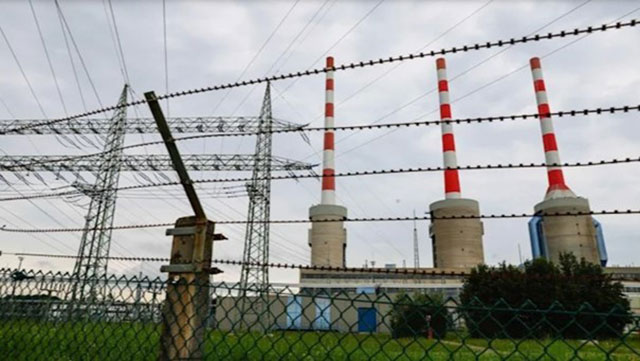
European power and carbon prices surged to a record, driven by the soaring costs of other energy commodities.
Global energy demand is picking up after the pandemic and a supply crunch in the gas market is boosting the cost of power generation. Hot weather and low wind speeds are curbing renewable power production, while the price of coal -- the dirties of fossil fuels -- has also surged more than 70% in Europe this year.
The rising costs are a pain for consumers and businesses recovering from the pandemic. They also come in the summer, when demand is usually low, setting the stage for a difficult winter. Utilities across Europe are hiking prices at the same time as everything from food to transport costs are also rising, a headache for politicians.
“As the current strength in wholesale prices increasingly feeds through to retail tariffs in coming months, there’s likely to be growing focus on the role of governments in mitigating the impacts of the rises in both the short and medium term,” said Glenn Rickson, head of European power analysis at S&P Global Platts in London.
Next-year power in Germany, the regional benchmark, rose 1.2% on Monday to as high as 91 euros per megawatt-hour on European Energy Exchange AG. Gas prices have soared more than 170% this year, while carbon futures have climbed to 63 euros a metric ton, an all-time high.
Germany is leading the transition to a green economy based on solar and wind. That means the steady supplies from plants burning fossil fuels that Europe’s biggest power market has got used to are on their way out. As much as 9,000 megawatts of capacity, the equivalent of about 9 nuclear reactors, will be decommissioned by 2023, the bank said.
The surging bills could also increase the pressure on the next German government to review taxes and subsidies, according to Rickson.
European short-term power markets are also soaring on high fuel cost and analysts including those at Bank of America Corp. don’t see the rally ending anytime soon.
Source: Bloomberg
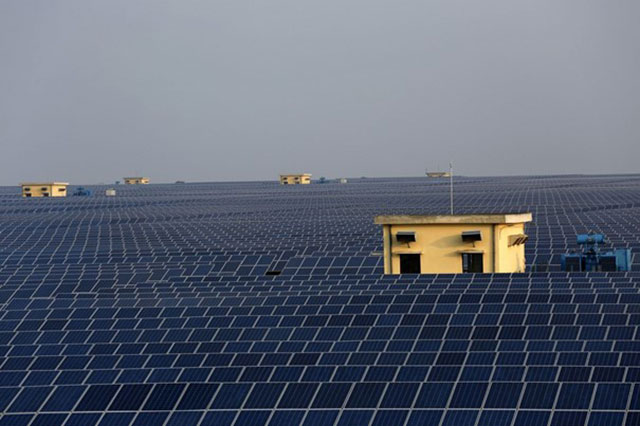
The U.K. and India are backing an effort led by Bloomberg LP to steer billions of dollars toward renewable energy projects in the south Asian country to help it transition away from fossil fuels.
The governments, along with the Climate Finance Leadership Initiative, announced the new partnership known as CFLI India in a statement on Thursday. Its aim is to work with the public and private sectors to spur the flow of private capital into India as the country embarks on a record build-out of renewable power.
The U.K. later this year will host the COP26 international climate talks, where countries are set to update their emissions-reductions pledges made under the 2015 Paris Agreement. Indian officials have insisted that developed economies need to ensure more investment for the country to tighten its climate goals so that its citizens don’t have to bear the strain of the transition.
“This partnership is a great example of how the public and private sectors can work together to speed the transition to clean energy and make possible the deep emissions cuts we need to reach the goals of the Paris Agreement and beyond,” according to Michael Bloomberg, UN Special Envoy on Climate Ambition and Solutions and chair of the Climate Finance Leadership Initiative.
India, the world’s third-biggest emitter of greenhouse gases, plans to expand its renewable power capacity more than four-fold to 450 gigawatts by the end of this decade, marking a shift from fossil fuels such as coal and oil. BloombergNEF estimates the country will need $649 billion of fresh investments in its power sector to hit that target, a funding gap private investments can fill.
CFLI India will be co-chaired by Shemara Wikramanayake, chief executive officer of Macquarie Group Ltd., and Natarajan Chandrasekaran, chairman of Tata Group. It includes major Indian and multi-national companies from the private sector. The City of London Corp. and the Global Infrastructure Facility will also support the initiative, according to the statement.
Source: Bloomberg
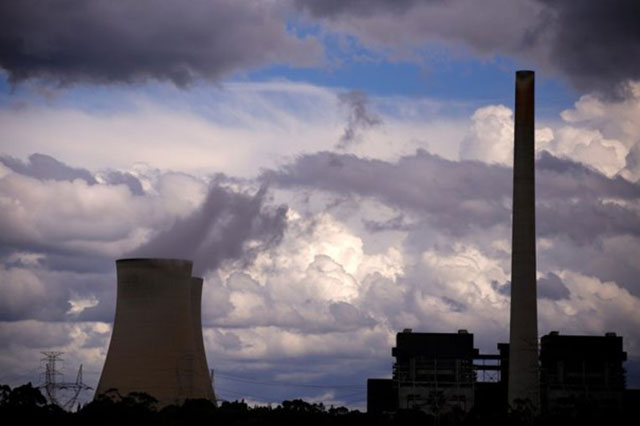
Australia's government should increase its efforts to phase out coal or else climate change will dramatically damage the country's economy, Selwin Hart, the United Nations special adviser on climate change, said.
Australia's reliance on coal-fired power makes it one of the world's largest carbon emitters per capita, but its conservative government has steadfastly backed fossil fuel industries, saying tougher action on emissions would cost jobs.
"We fully understand the role that coal and other fossil fuels have played in Australia's economy, even if mining accounts for a small fraction - around 2% - of overall jobs," Hart said in a speech at the Australian National University in Canberra.
"But it's essential to have a broader, more honest and rational conversation about what is in Australia's interests."
The U.N. has called for phasing out coal by 2030 in Organisation for Economic Co-operation and Development countries, which include Australia.
In July, energy and environment ministers from the Group of 20 big economies failed to deliver a deal to phase out coal by 2025. But some experts said there were chances of progress at U.N. climate talks in Glasgow in November.
Prime Minister Scott Morrison has said Australia is on a path to net zero carbon emissions but has stopped short of committing to a timeline. He has said that Australia would update its 2030 emissions projections going into the Glasgow talks.
Most other developed countries have signed up to a target of net zero emissions by 2050.
Hart said that the Australian government should "seize the moment" and switch to renewables.
"If the world does not rapidly phase out coal, climate change will wreak havoc right across the Australian economy: from agriculture to tourism, and right across the services sector," he said.
Source: Reuters

Leading shipping associations have proposed creating a global levy on carbon emissions from ships to help speed up the industry's efforts to go greener.
With about 90% of world trade transported by sea, global shipping accounts for nearly 3% of the world's CO2 emissions and the sector is under growing pressure to get cleaner.
For the first time, the International Chamber of Shipping (ICS) and Intercargo jointly proposed a levy based on mandatory contributions for each tonne of CO2 emitted from ships exceeding 5,000 gross tonnes and trading globally.
The money collected would go into a climate fund that would be used to deploy bunkering infrastructure in ports around the world to supply cleaner fuels such as hydrogen and ammonia, according to the proposal.
"What shipping needs is a truly global market-based measure like this that will reduce the price gap between zero-carbon fuels and conventional fuels," ICS Secretary General Guy Platten said.
The proposal was submitted on Friday to the UN's shipping agency, the International Maritime Organization (IMO).
An IMO spokesperson said all proposals were welcome and would be up for discussion later this year, adding that "proposals on market-based measures (MBM) are in line with the initial IMO GHG (greenhouse gas) strategy".
The IMO will hold an intersessional working group meeting scheduled for late October, ahead of a late-November session of the Marine Environment Protection Committee, to address issues including carbon-reduction efforts.
The European Commission in July proposed adding shipping to the bloc's carbon market, targeting an industry that had for more than a decade avoided the EU's system of pollution charges.
An IMO-driven carbon levy will enable more industry input at the global level as concerns grow at regulation by separate jurisdictions such as the EU.
The ICS said "piecemeal" approaches such as the EU's proposal would significantly complicate "the conduct of maritime trade".
"ICS believes that a mandatory global levy-based MBM is strongly preferable over any unilateral, regional application of MBMs to international shipping, such as that proposed by the European Commission," it said.
Source: Reuters
The Role of Renewable Energy in The Climate Change Adaptation Strategy
In the report of the International Renewable Energy Agency (IRENA) on the Role of Renewable Energy in the Adaptation Strategy to Climate Change, it was stated that the effects of climate change are seen with increasing frequency and intensity all over the world. According to the report, action to mitigate the impact of climate change, particularly reducing greenhouse gas emissions, remains vital; however, this is only one of the two main topics of the fight against climate change. The critical importance of the second title, adaptation, has been widely recognized in recent years. There is an increasing flow of funding to adaptation activities at the international and national level for action to adapt to and protect from the effects of climate change. Many climate adaptation strategies require significant energy use. But the role of reliable, affordable and modern renewable energy services in climate adaptation is not widely accepted in policy making or implementation. This report discusses the benefits of renewable energy-based adaptation and highlights the importance of renewable energy in an integrated mitigation-adaptation approach to climate action.
You may find the full report HERE
Solar Istanbul
22 - 25 September 2021
14. EIF World Energy Congress and Expo/Antalya
13 - 15 October 2021 / Antalya
ISES SWC 2021 Solar World Congress Vırtual Conference
25 - 29 October 2021
11. Turkey Energy Summit & Istrade 2021
21 - 23 November 2021
European Utility Week (Enlit Europe)
30 November - 2 December 2021
DistribuTech International
26 - 28 January 2022
CIRED Porto Workshop 2022 - E-mobility and power distribution systems
02 - 03 June 2022

